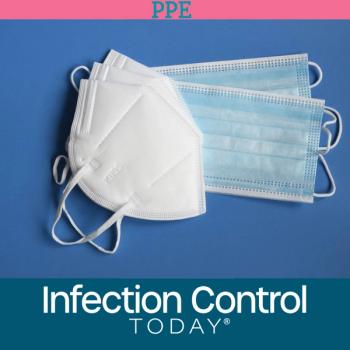
Motivating Leadership and the Team to Improve Employee Engagement, Reduce Burnout, and Build Career Paths
We all know that preventing employee fatigue and burnout requires a multipronged and ongoing effort to address the issue. There’s probably not a company in this nation that hasn’t experienced exhausted and frustrated employees, and the struggle is real to keep everybody engaged and motivated.
We all know that preventing employee fatigue and burnout requires a multipronged and ongoing effort to address the issue. There’s probably not a company in this nation that hasn’t experienced exhausted and frustrated employees, and the struggle is real to keep everybody engaged and motivated.
Health care jobs in general involve demanding and sometimes dangerous situations, including exposure to germs and illnesses, as well as backlash from patients and their families. The COVID-19 pandemic presented even more challenges, including a drastic surge in patients, longer working hours, and sometimes shortages of supplies and protective equipment.
For example, often tucked away somewhere out of sight in a hospital is your infection prevention team, comprising frontline workers who primarily operate behind the scenes. The IPs were already experiencing long and unpredictable hours, and COVID-19 significantly increased infection control responsibilities, causing extreme pressure and fatigue for these employees.
Burnout among infection preventionists (IPs) can lead to team members being less vigilant with protocols, resulting in reduced efficiency in dealing with the infectious situations they face daily.
IPs are unsung heroes of health care, who drive infection safety throughout an organization. It can be challenging to deal with germs and infections, especially when working long hours in a health care facility and wearing a lot of personal protective equipment (PPE). However, it is a critical function in overall health care outcomes, according to Jill Holdsworth, CIC, FAPIC, CRCST, CHL, NREMT, an Atlanta IP and a member of the Certification Board of Infection Control and Epidemiology Board of Directors and the Healthcare Sterile Processing Association (HSPA) Certification Council.
“Not only do these employees worry about the safety of the patient and each other, but they must also be concerned with the fact that health care–associated infections result in longer hospital stays, increased medical expenses, and could even lead to antibiotic resistance,” Holdsworth said. “Empower them, educate them, [and] respect them. We want to keep them, and knowing others see their important work helps us win the battles with retention and burnout.”
Tania N. Bubb, PhD, RN, CIC, FAPIC, said she considers her entire team “leaders,” and empowers them as such, and strives to delegate meaningful responsibilities to all to keep them engaged. After all, they regularly visit the hospital to converse with physicians, nurses, and patients. They must possess leadership and communication skills, as well as advanced knowledge of infection prevention, including the tools and processes. “I want them to know they are beneficial to the alignment of the institution,” Bubb said, who is a senior director of infection prevention and control at Memorial Sloan Kettering Cancer Center in New York, New York.
“They all are leaders, and I understand that leadership styles vary—there is no right or wrong. I want equity in leadership, not equality,” she said. “A good IP understands that mistakes involving infections cost lives.”
By providing opportunities to improve communication and leadership skills, more advanced team members will be better equipped to lead and drive culture change. “Their importance to this institution cannot be stressed enough, and knowing their value helps when days are long,” Bubb said.
Employees at her cancer institution are unique and understand the needs of patients who are immunocompromised. The risk of infection is high in a cancer center. “It’s easy to deploy good safety practices when the staff understands the needs of [patients with] cancer. They get it, they really do.” Having an environment where staff members know and understand their patient type and their unique role in helping those patients survive is one of the best “medicines” for employee retention, she said.
Diving deeper into concerns about infection (and retention) are the sterile processing (SP) team technicians, who tackle one of health care’s dirtiest jobs.
They, too, must be knowledgeable about all procedural equipment, chemicals, and various PPE. Although protecting the patient is the mission, protecting those working in decontamination is equally important—it’s dirty, and it’s dangerous.
How do you convince an entry-level employee to stay? The SP team truly is a difference maker, according to Deana Milum, MSN, CNOR, NE-BC, executive director of surgical services at UK King’s Daughters Medical Center in Ashland, Kentucky. “We must convince them of this.”
A multifaceted process is in place at UK King’s Daughters. Employees are encouraged to set long-term goals within the department, and a developmental plan is put into place. This can include certifications, improved communication skills, or enhanced leadership abilities. Their name is displayed on a card that serves as a reminder of what they want to achieve, which is a huge driver of success, Milum explained. All certificates are displayed on a prominent wall, celebrations take place, and there are numerous team meetings, along with plenty of “thank-yous.”
Tips from infection prevention and SP leaders around the country for curbing burnout and motivating “infection fighters” include the following:
- Implementing daily huddles to openly discuss concerns, challenges, and good news
- Encouraging education and certification
- Celebrating certification milestones with a “Wall of Fame”
- Offering tuition reimbursement and study time
- Helping with career path advancement and fair income levels
- Encouraging interaction with physicians, nurses, and administration, as well as involvement with facility committees
- Marketing and promoting the team through various channels, including publications and blogs
- Redesigning areas of the physical department to better accommodate the staff
- Being understanding of family/work/employee health balance
- Enhancing trust between all employees and management
- Designing new and updating existing protocols to be sustainable
Success comes from team members’ passion for what they do, Milum explained, crediting her department’s apprenticeship program as one reason for such success. The program is supervised by a team educator, who also trains staff on new equipment and standards.
For example, a kitchen worker recently joined the department at an entry-level position and, with support and training, is now proudly looking at a long-term career in SP. “We invest in them professionally by paying for certifications and allowing work time to study, and we are happy to do it,” Milum said.
Senior leaders, physicians, and nurses regularly round with the SPs. “We work very hard to shine the light on this team.” At UK King’s Daughters, a new physical department was redesigned and built after COVID-19 to “be better and be ready for the next pandemic—and there will be one,” Milum said. “COVID[-19] made us look at sterile processing differently.”
Upgrades to facilities, tools, and PPE are essential in the IP/SP world, explained Nicholas Day, BS, AAS, CRCST, CIS, CHL, CER, CSSYB, a manager of central SP, high-level disinfection, and equipment management at University Hospitals Elyria and St John Medical Centers in Ohio.
Many conflicts can be resolved by providing staff with the necessary tools and equipment, Day explained, but the less tangible things are just as important. There needs to be interaction, support from leadership, and a good working environment. “We establish house rules.... The team comes up with these, and each member signs a document. We want them to be respectful to each other by following the house rules. We encourage each staff member to look for things that might need improvement, and they help us resolve issues so that we can move processes from average to elite,” he said. Day is also the director of the HSPA Board of Directors and vice president of the HSPA Northeast Ohio Central Service Association Chapter.
The Walk in Your Shoes program at Day’s facilities encourages leadership and physicians to spend time with the SP techs to gain a better understanding of the tasks and their attention to detail in infection prevention, as well as the staff’s continuing education and career aspirations. For fun, there is the infamous “Too Legit to Dip” contest, awarding gift cards and certificates for the best dips.
Kevin M. Bush Jr, DHSc, EdD, FACHE, administrative director at ChristianaCare in Delaware, described the SP staff as an integral partner in ensuring patient safety, avoiding hospital readmissions, and reducing extended stays. His goal is to retain a good staff and develop them into educators, supervisors, managers, and directors. At ChristianaCare, there is a lot of cross-training, as the SP team must be familiar with the equipment, safety protocols, and various chemicals, and possess communication and leadership skills to practice independently with a broad skill set.
This is because trauma happens 24/7, Bush explained. “There isn’t a down day or expected busy times. SP employees must always be ready, and acknowledging this importance is one of the greatest things we can do,” he said.
Education and certification are encouraged, with tuition reimbursement available. A passionate health care employee is a good employee. In fact, one SP employee continued education and advancement to become a nurse anesthetist, Bush said.
As you can see, preventing burnout and motivating leadership doesn’t have a single answer; there are many components to success. However, engagement with and appreciation from leaders and coworkers seem to stand out as the most significant influencers. More specifically, the SP team—though not always the easiest to find in a physical facility—is always accessible to take on the most extreme and unexpected factors influencing the health of all of us.
Newsletter
Stay prepared and protected with Infection Control Today's newsletter, delivering essential updates, best practices, and expert insights for infection preventionists.






